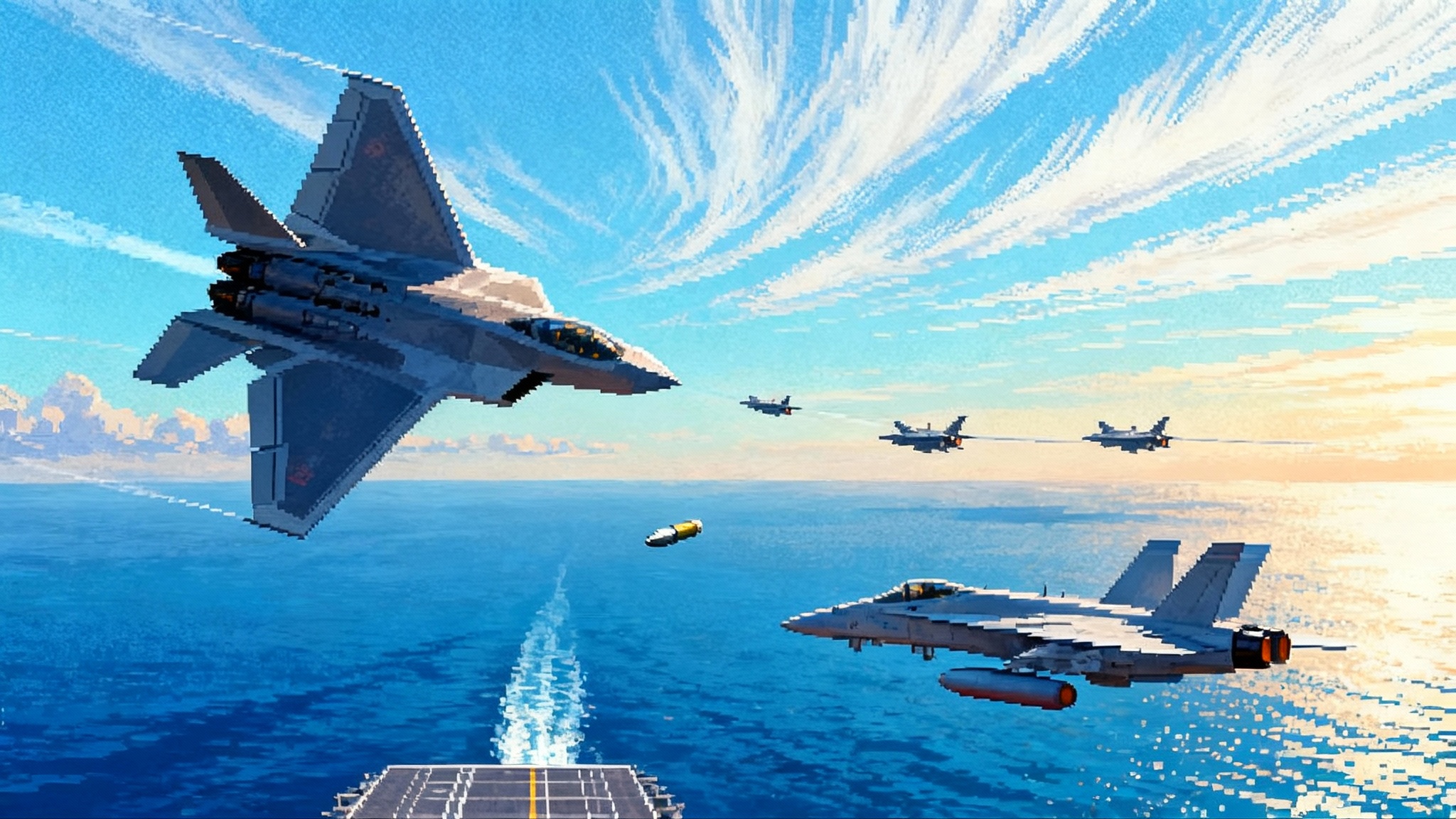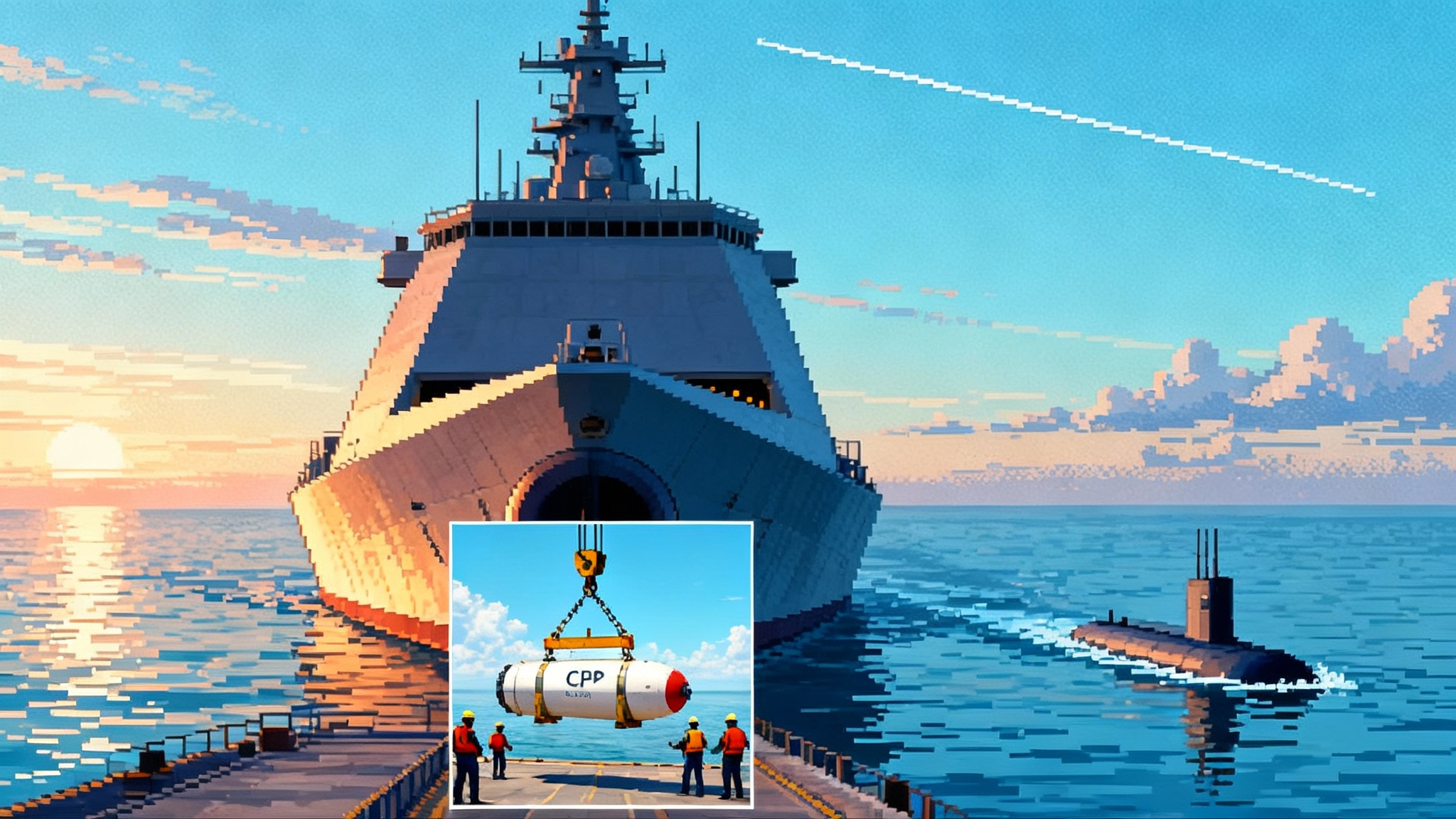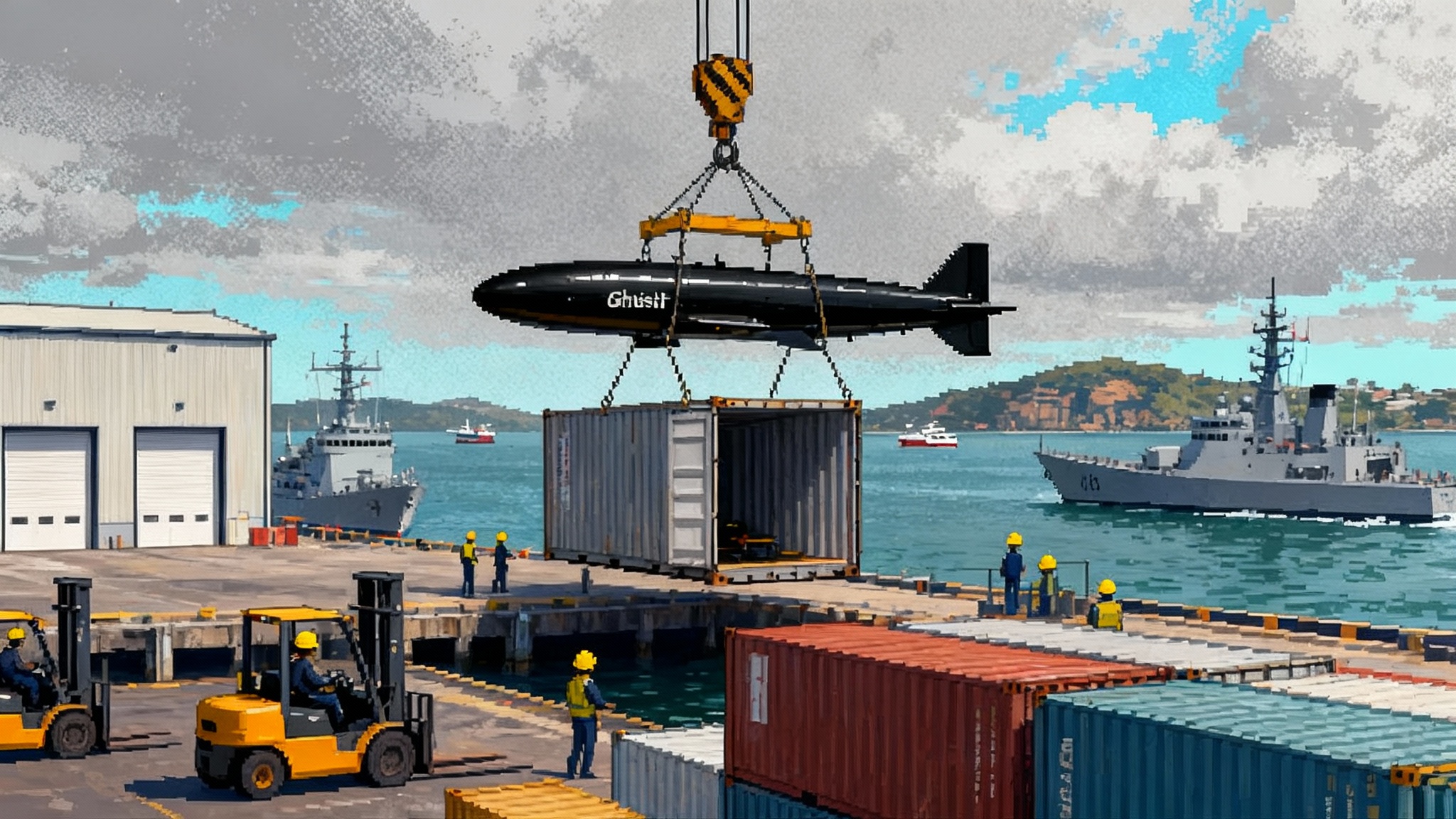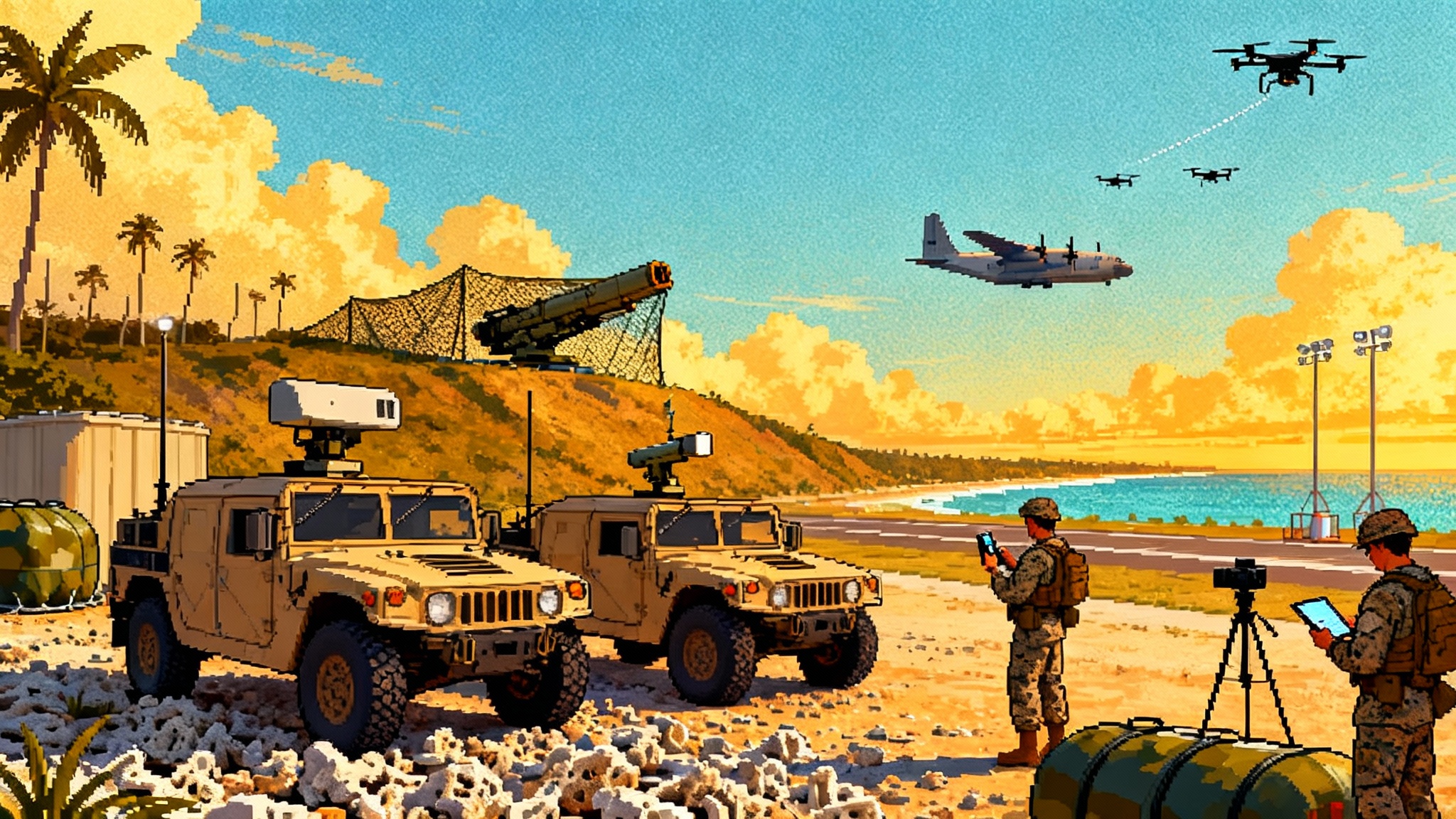JATM’s 2025 Breakout: How AIM-260 Rewires BVR Combat
FY26 budget lines and 2025 test disclosures show AIM-260 JATM shifting from black program to fieldable reality. Here is how it outranges rivals, reshapes F-22 and F-35 tactics, enables CCA missile trucks, and pressures Super Hornet allies.

The year the horizon moved
For years, the Joint Advanced Tactical Missile lived in the shadows. In 2025 it finally stepped into enough light to redraw the air-to-air map. The summer’s Fiscal Year 2026 budget books put real procurement dollars on the table for the first time, while new test disclosures confirmed that both services are moving from demonstration to fielding preparation. The signal is simple. The post‑AMRAAM era is starting, and AIM-260 JATM is designed to push the fight farther than any U.S. fighter-launched radar missile before it.
The clearest public marker was the Department of the Navy’s FY26 justification, which broke cover with a dedicated JATM line and several hundred million dollars assigned, paired with a marked reduction in AIM-120 purchases. That budget pivot is a practical countdown clock for the transition from AMRAAM to JATM, not a paper exercise. It is the first concrete sign that the fleet is budgeting for real inventory, not only for test rounds but for squadrons. Navy begins FY26 JATM procurement.
What the FY26 budget really signals
When a classified missile appears as a procurement line, a few things are almost always true behind the curtain:
- Baseline design is frozen. Major aerodynamic and propulsion changes are complete. What comes next are software and incremental hardware updates, not redesigns.
- Factory tooling is in place. The prime and at least one motor supplier have moved from engineering lots to low-rate production cadence. That means long-lead items and energetics are being bought now to meet 2026 deliveries.
- Integration test points are sequenced. Captive-carry, separation, envelope expansion, and live-fire events have matured enough that platform software teams can lock down interfaces and start regression test cycles for fleet builds.
Read this in the context of a deliberate ramp. Budgets shift before squadrons do. Expect AMRAAM buys to remain for sustainment and partners, while JATM climbs from niche to normal on select air wings and Raptor units.
How JATM stretches the fight
Do not fixate on a single range number. Engineers and tacticians care far more about two other measures: the no-escape zone and endgame energy. JATM’s design intent is to make both meaningfully larger than AMRAAM’s while fitting in the same spaces and on the same rails.
- Propulsion. A modern solid-rocket motor with staged or dual-pulse energy management lets the missile push hard early for kinematics, then save thrust for the terminal turn. That preserves speed for the last seconds when targets try to break lock with hard maneuvers.
- Aerodynamics. External lines in recent official renderings show fewer mid-body control surfaces than AMRAAM and a cleaner, low-drag body. Less drag means more energy retained downrange.
- Seeker and software. A programmable active radar seeker with waveform agility is the brain that exploits those extra meters per second. The payoff is better resistance to modern jamming and more reliable target discrimination in clutter.
- Datalink and guidance. Two-way updates let the missile ride a lofted profile if the geometry calls for it, then cut in for a high-energy terminal, or dynamically re-vector if the target turns into or out of the shot.
Add networked targeting and you get a multiplier. A stealthy fighter can feed precise cues while a wingman, manned or unmanned, carries the bulk of the missiles. See how this plays out across architectures in our IBCS 2025 breakout moment.
Outranging PL-15 and R-37M, the operational way
Two adversary weapons define the modern beyond‑visual‑range problem. China’s PL‑15 set the pace for dual‑pulse active radar missiles in the Pacific, and Russia’s R‑37M created a very-long‑range threat envelope against tankers, airborne early warning, and fighters that stray too high, slow, or predictable. Public range claims vary widely for both. What matters in practice is the geometry where those missiles threaten U.S. and allied force packages.
JATM’s job is not to win a brochure contest. It is to make U.S. shooters comfortable taking the first quality shot against fighters armed with PL‑15-class weapons, and to complicate R‑37M-style standoff tactics by forcing escorts to defend instead of shepherding long‑range shooters. The bigger no‑escape zone and higher endgame energy are how it does that. Add networked targeting and you get a multiplier. A stealthy fighter can feed precise cues while a wingman, manned or unmanned, carries the mass of the missiles.
Loadouts and tactics: F‑22, F‑35, Super Hornet
JATM changes what crews carry and how they fight.
-
F‑22 Raptor. The Raptor’s internal bays are sized for AMRAAM-class weapons, and JATM is designed to fit the same footprint. Six internal radar missiles plus two infrared missiles remains the standard stealth load, but the tactical value changes. With JATM, a two‑ship can take credible first shots while still preserving enough missiles for follow‑ups after the merge or for a second engagement. Expect tactics that emphasize earlier gate transitions, more confident loft profiles, and shot‑deconfliction aided by automatic timeline tools.
-
F‑35A/C. The Sidekick adapter increases internal capacity from four to six AMRAAM‑sized weapons. As JATM enters the magazine, a four‑ship of F‑35As or Cs can carry two dozen radar missiles internally. That matters for stealthy fighter sweeps and for first‑day suppression where every external store has a signature cost. With six internal missiles, F‑35s can also reallocate wing pylons to fuel or electronic attack pods without gutting air‑to‑air punch.
-
F‑35B. The short‑takeoff variant’s smaller bays limit internal count, so mixed internal‑external carriage will remain a command decision driven by threat and signature tolerance. JATM still provides value by giving each internal shot more reach, allowing B models to stay inside their stealth envelope longer before committing to external weapons.
-
F/A‑18E/F Super Hornet. Carrier air wings will phase JATM into the same stations used for AMRAAM. The Block II infrared search and track pod, which reached initial operating capability in 2025, dovetails with JATM’s strengths by providing passive long‑range cueing in heavy jamming or against low‑observable targets. Pairing with NGJ Mid-Band enters service enhances the electronic attack picture that supports long-range shots. Expect deck cycles that mix AIM‑174B for extreme reach, JATM for the main BVR fight, and shorter‑range heaters for the merge. On certain alerts you will see heavy missile counts to create a high‑volume first salvo.
Tactically, this shifts the choreography of the opening minutes. Fighters can commit slightly earlier, accept greater lateral separation across the formation, and hold a reserve of missiles for second passes because each first‑pass shot has better odds.
Quarterbacks and trucks: CCA with JATM
Collaborative Combat Aircraft, the program of autonomous wingmen that the Air Force is moving from prototypes to production‑representative test articles, are the natural partners for JATM. Think of a VLO quarterback and several missile trucks. The quarterback provides the high‑quality tracks from its sensors and datalinks. The trucks carry the mass of JATMs to turn those tracks into multiple near‑simultaneous shots. The Navy’s carrier effort mirrors this trend, as covered in 2025 CCA contracts launch wingmen.
This solves two problems at once. First, it returns volume fire to stealthy packages without hanging missiles outside the signature aperture of the lead jets. Second, it imposes a defensive dilemma on adversaries who now face staggered salvos from multiple bearings. In a Pacific scenario where tanker brackets and airborne early warning corridors must survive, a handful of quarterbacked CCAs with JATMs can keep enemy fighters busy defending instead of pressing toward the high‑value assets.
Pressure on allied upgrade paths
Allies that rely on AMRAAM face three near‑term choices as JATM enters U.S. service:
- Double down on the latest AMRAAM D‑3 variant while improving sensors and networking to squeeze more probability of kill out of each shot.
- Accelerate integration of comparable long‑range missiles already in their portfolio, such as Meteor, on relevant platforms, while ensuring those jets have the software, racks, and thermal margins for high‑energy BVR fighting.
- Seek access to JATM when policy and production allow, which is unlikely in the very near term. Until then, invest in the enablers that make any BVR missile better: infrared search and track, electronic support measures, robust two‑way data links, and reliable track fusion with E‑7 class airborne early warning.
For carrier partners with Super Hornets, the path will likely mirror the U.S. Navy’s sequence, with AIM‑174B for very long reach, AMRAAM D‑3 sustainment, and then JATM integration as software and clearances propagate to coalition jets.
The disclosures that mattered in 2025
In a year still thick with classification, two public developments moved the needle.
- A NAVAIR portfolio slide confirmed the AIM‑260A exterior look, validating that the missile fits AMRAAM form factors while adopting a lower‑drag control scheme. It is a rare official glimpse that aligns with earlier Air Force imagery and ends years of speculative art.
- Congress and service officials clarified that JATM’s schedule weathered the autumn shutdown scare and continues to grind through integration, even as the program missed its early initial operational capability goal. The upshot is steady progress with the first fielding still gated by platform software, not by a fundamental missile performance surprise. Lawmakers clarify JATM status and schedule.
Near‑term watch items through 2026–27
If you want to track real progress without access to the black‑box details, watch for these practical markers.
-
Initial fielding signals
- Training rounds. Look for captive air training missile and dummy air training missile versions of JATM appearing in squadron photos, load crew competitions, and weapons school syllabi.
- Munitions handling. Local notices about new explosive safety quantity distance arcs at fighter bases indicate storage for a new class of rounds.
- Range activity. Missile flyout tests often create airspace and maritime closure notices. A cluster of such notices at Eglin Gulf, Point Mugu, or over-land corridors is a tell for live‑fire workups.
-
Seeker and software increments
- Waveform drops. Fleet software loads described as adding seeker mode enhancements are the quiet engine of JATM growth. Expect periodic updates that improve home‑on‑jam behavior, clutter rejection, and low‑observable target tracking.
- Datalink refinements. Messages that trim latency or expand multi‑ship coordination matter as much as raw seeker power. They unlock tactics like bracketed multi‑axis salvos with better timing control.
-
Platform integration milestones
- F‑22. A clear milestone is a combined software release that certifies JATM alongside other upgrades such as external tanks and new sensor pods. Expect the first combat‑coded units to receive the missile with a tactics manual addendum that emphasizes early‑shot geometry and deconfliction.
- F‑35A/C. Sidekick becomes routine, then JATM rides in those added stations. Watch for software release notes that mention six‑missile internal employment clearances and expanded weapon employment zones at high altitude.
- F/A‑18E/F. Look for carrier air wings publishing photos of load crews building mixed AIM‑174B, JATM, and AIM‑9X lines before cruise workups, and for IRST tactics paired with JATM in Fleet Replacement Squadron training.
- CCA. As production‑representative test articles fly, a key tell will be payload certification for AMRAAM‑class weapons. When that happens, JATM carriage is a software and clearance step away, not a redesign.
What changes for pilots and planners
- Earlier commit, cleaner exits. With greater no‑escape zones, shooters can fire earlier, then turn cold sooner to preserve altitude, fuel, and options. That keeps formations fresher for a second engagement.
- More confident standoff defense. Tanker and E‑7 corridors can sit slightly farther forward under the umbrella of JATM‑armed fighters, reducing transit times and keeping the strike rhythm intact.
- Formation geometry stretches. Two‑ships and four‑ships can accept greater lateral spacing while maintaining mutual support because each jet’s first shot is more decisive.
- Logistics planning shifts. A higher‑energy missile with similar outer mold lines means squadrons do not have to re‑invent racks or bays, but they will adjust storage, handling training, and pre‑flight checks for new energetics and electronics.
The big picture
AIM‑260 JATM is not a silver bullet. It is an ecosystem upgrade. The missile’s extra reach is the tip. The rest is everything that makes that reach matter: better passive and active sensing, cleaner software, more precise datalinks, and crews trained to exploit the geometry. The 2025 disclosures and the FY26 procurement lines matter because they show the ecosystem is moving together.
The last word belongs to the operators. They measure success in the quality of the first shot and the options it buys them after the first shot. By that measure, JATM’s 2025 breakout is not just another missile debut. It is the moment the horizon moved, and with it the tactics, the loadouts, and the balance of initiative in the opening minutes of a high‑end fight.








